|
SPEKE
HALL
LIVERPOOL
|

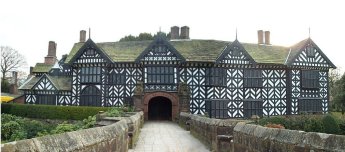 |
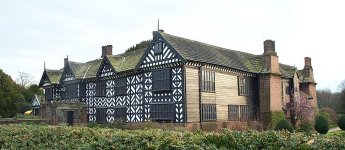 |
| The
first historical
references to Speke hall date the building to the 14th
century, and as
with many timber framed buildings it has continuously
been added to and
adapted during its history. The house owners have for
most of its
history been the Norris family, passing then in the
18th century to the
Watt family until
finally in 1944 it passed to National Trust. |
| The Central heating system - has been installed in two phases, the first phase installed in 1895 used cast iron socket and spigot pipework serving various sizes of pipe coil type heaters located mainly in corridors and hallways etc. These pipe coil heaters are of a size and style not found in any other of National Trust properties visited to date. Of particular interest was the large size pipe coil heater fitted in the Great Hall [4 rows each 10 pipes high]. |
A selection of the 4 different size pipe coil heaters
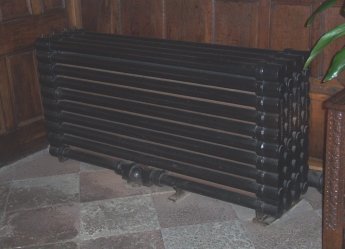 |
Four
rows
wide by
ten pipes high |
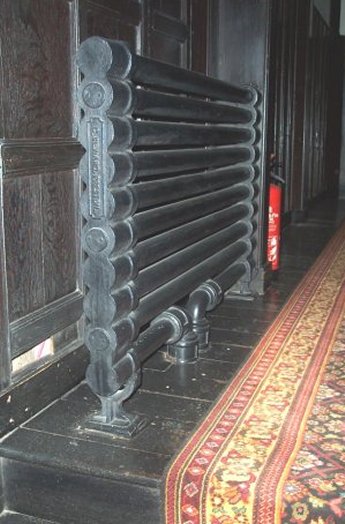 |
One
row
wide
by
nine pipes high |
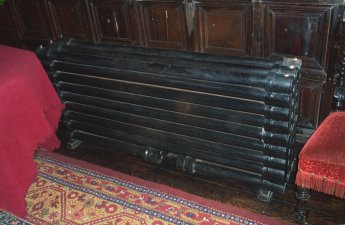 Three
rows
wide by
nine pipes high |
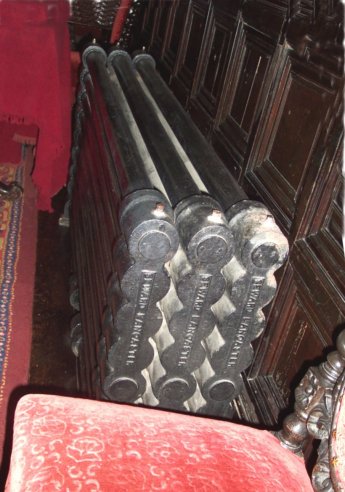 |
|
|
The only pedestal enclosure for a pipe coil heater was sited in the entrance passage
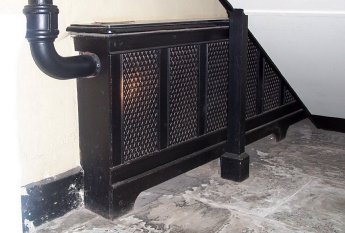 |
| There
are
only a few valves fitted
in the heating pipework of the first phase which
control the system,
but one valve is
of considerable interest. In the entrance
passage of the building is an oblique pattern globe
valve complete with
side
mounted indicator scale. This scale is used to assist
in setting
the valve to
regulate the flow of water. This type of valve being
fitted
to regulate an original gravity circulation
system is highly
unusual and
has never been
noted in any other heating system of similar
age. The valve’s
manufacturer could be
indicated by the letters H&S
HX which
are stamped on the body of the valves. The initials
H&S must
indicate that the manufacturer of the valves was the
firm of Hartley
& Sugden of Halifax. |
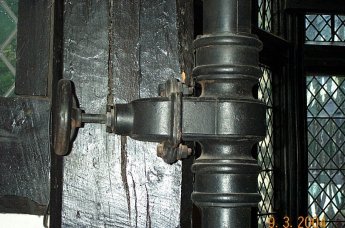 |
 |
| The second, later phase of the heating system was most likely installed in the 1910's, and serves the perimeter rooms of the building using steel pipe with wrought iron fittings, feeding the more conventional type cast iron sectional radiators. |
| |
This pattern of cast iron sectional radiator was made by the National Radiator Company from their Ideal two column Plain range. |
| Both phases of the heating system appear to have been installed by C.Seward of Lancaster [and Preston], whose name is embossed on the end headers of most of the cast iron pipe coil heaters and also in the air vent plugs of the sectional radiators. |
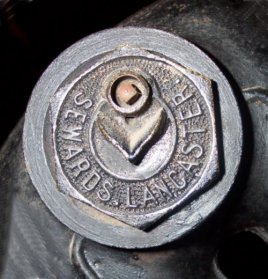 |
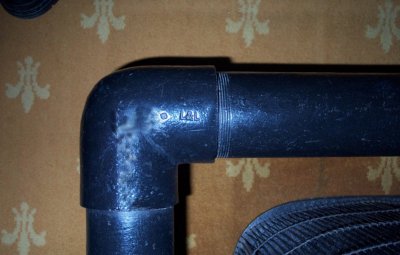 |
Some
of
the
wrought iron fittings bear the inscription
‘L&L’.
This is presumably the maker’s trade mark. as seen in the 1894 trade advertisement of Lloyd & Lloyd shown below. |
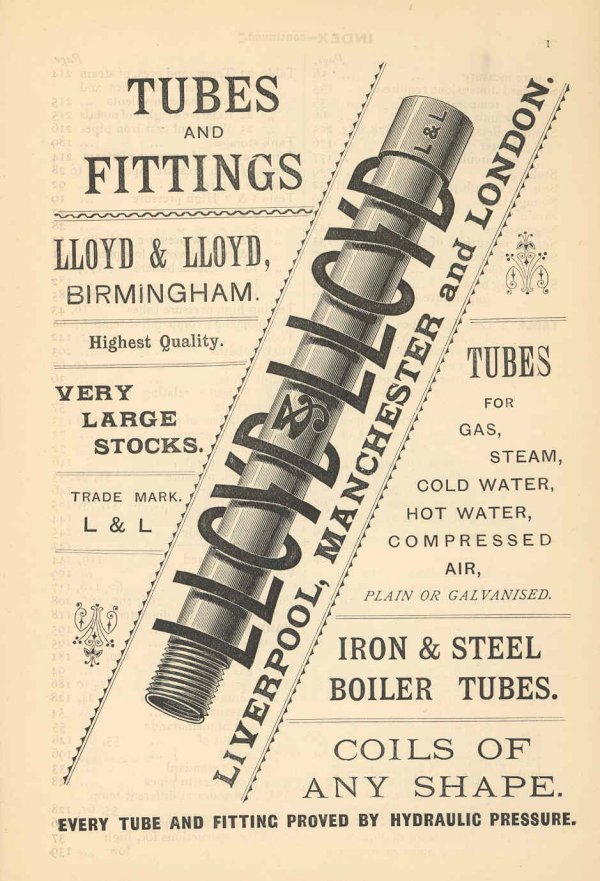
| KITCHEN |
| The
Domestic Hot Water
System is
restricted to the ground floor Kitchen and Scullery
area. An Ideal
Domestic Boiler size
14D suitable for
solid fuel made
by the National
Radiator Company is installed in the Kitchen.
|
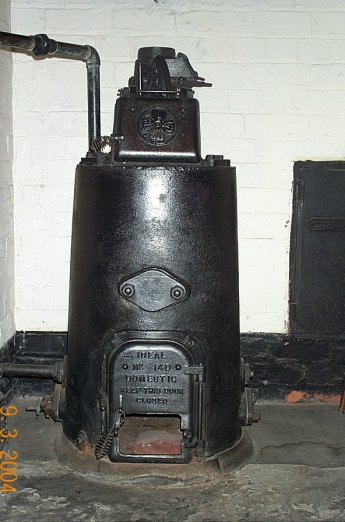 |
| An observation of the domestic distribution pipework found the tubing to be heavy gauge copper with screwed fittings. This is an unusual system of pipework for domestic hot water but could be explained by the fact that it pre-dated the introduction of light gauge copper tubing with capillary or compression type fittings. |
 |
Ice storage box.
In the kitchen is a
floor standing
timber
ice box, with opening top lid which revealed
a galvanised lined cabinet
with
various sized galvanised storage trays. The
nameplate on
the box was the Liverpool ice supplier.
|
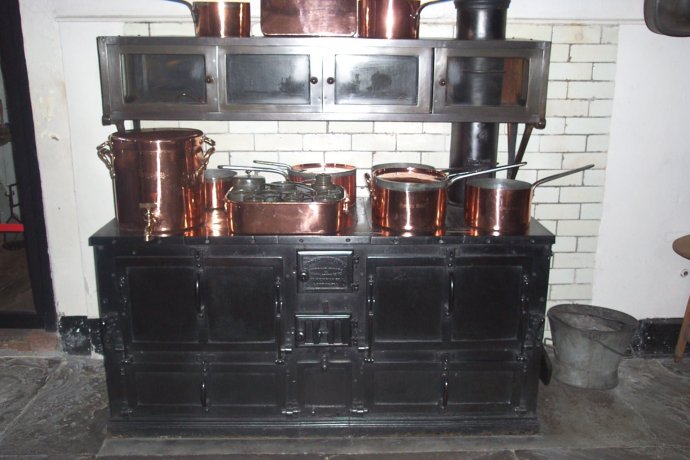 |
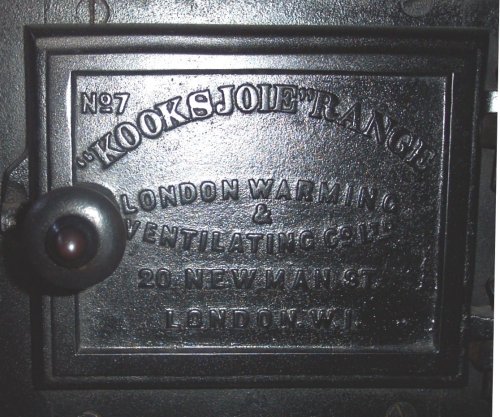 |
An
interesting connection
of the London Warming & Ventilating Co Ltd,
the maker of
the Kitchen range at Speke Hall shows it to be
the same firm that made
the Gurney
warm air stoves used to heat Cathedrals and
Abbeys.
|
Although the original 1930's electrical installation has long since been removed and upgraded, the original distribution board complete with its main isolators and switchgear has been preserved and remained untouched hidden away in a cupboard. The schematic diagram of the electrical system is also to be found in the cupboard.
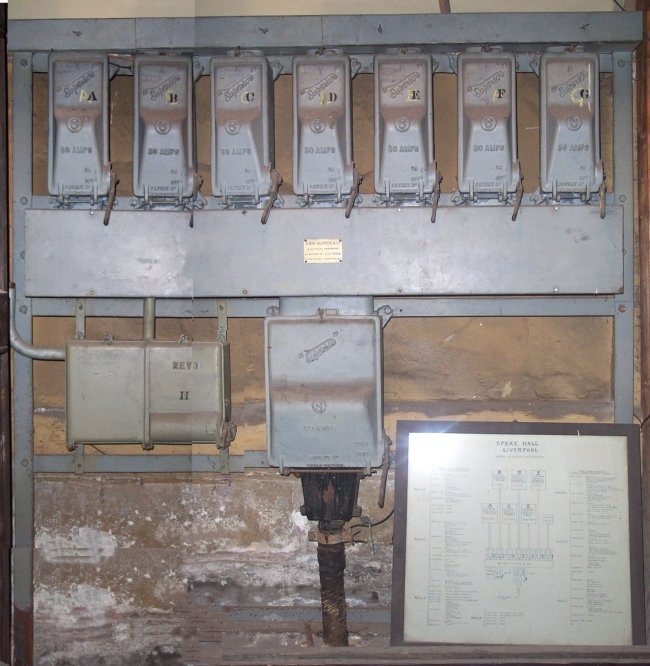 |
| The Oil
Engine |
|
ENGINE HOUSE
BUILDING
|
|
A recently
restored
old Hornsby Oil Engine now in excellent
working condition
and fully operational, has been fitted in
the restored Engine House.
This engine driving
through the original old line shafts and
pulleys (with new belts) will
now operate
a pillar drill which will be used as a
working exhibit in the adjacent
Workshop. This exhibit will help
to bring
back life to the ‘Home Farm’and provide an
example of Victorian working
farm machinery .
|
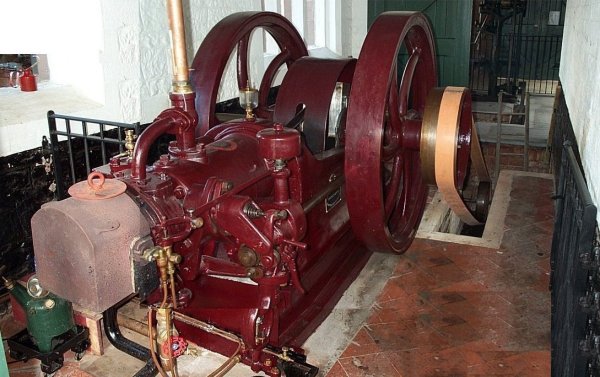 The
engine No. 48343
has a 9 inch diameter cylinder
and 18
inch stroke.
It operates at 200 rpm with a rating of 18 HP. |
| It is only
through
the dedication and personal time given by
engineers Ron Whitfield, Eric Coates and the
late Tom Ellis-Jones to this oil
engine restoration
project, that
will enable people to again witness this
wonderful example of
Victorian craftsmanship in action. |


